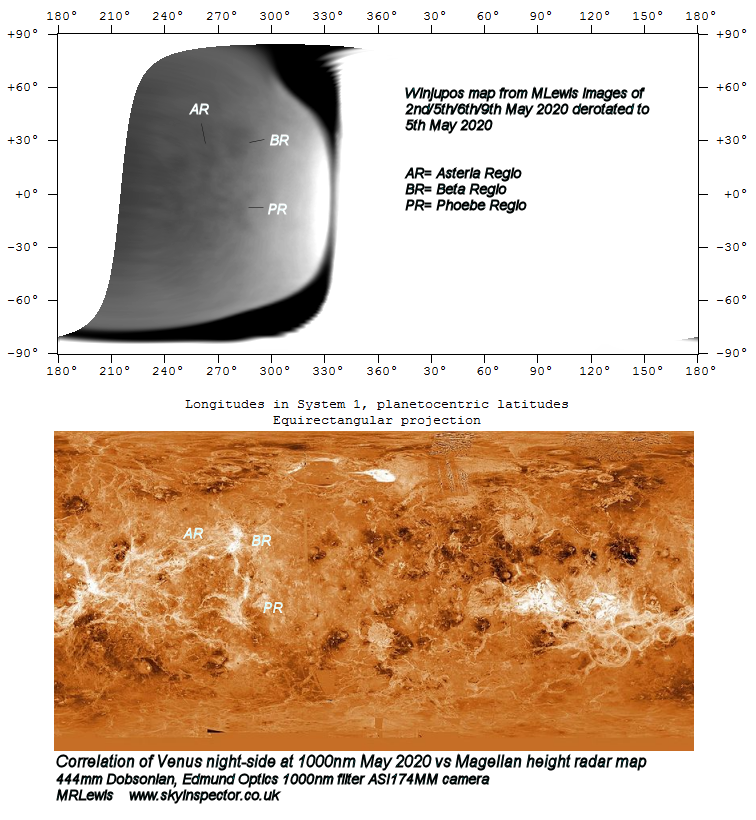Amateur observations of the surface of Venus in 2020-22
- 1British Astronomical Association (UK) d@davidarditti.co.uk
- 2Gemeye Observatory, Rubyvale, Queensland, Australia
- 3Astronomical Society of Australia, Murrumbateman, New South Wales, Australia.
The early 2020 eastern (evening) elongation of Venus was a particularly favourable one for northern hemisphere observers, and the early 2022 western (morning) elongation was favourable for southern observers. A number of observers in both hemispheres achieved IR imaging at around 1000nm of the night-time surface of Venus when in crescent phase. This presentation reviews the equipment and methods used by successful imagers of the night side, including the sky criteria necessary (altitude, solar altitude and phase), and the results obtained.
IR narrowband images taken around 1000nm show relief on the night-time surface of the planet due to differential cooling; the mountain-tops cool faster than the valleys and so emit less IR radiation. In several bands this radiation is not fully absorbed by the atmosphere and can be detected with small earth-based telescopes (at least 200mm aperture) so long as the sky is dark enough, light scatter from the illuminated planet in telescope and camera is minimised, and there is sufficient blocking of shorter wavelengths. This has been demonstrated since 2009. The signal detected by this method is not 100% correlated with surface relief, but seems to be modulated by some atmospheric effects also.
There is a key observational trade-off of sky darkness against altitude of the planet. Acceptable results are not obtained until the signal from the surface is at least 50% above the noise due to the sky background, but below 10º altitude the noise is increased to unacceptable levels by atmospheric absorption.
The design of the sensor is found to be critical. Most sensors marketed to amateurs have too much internal scatter at these wavelengths to be usable at such low s/n ratios. However, good results have been obtained with a number of commercial cameras.
The relationships between Venus’s rotation period and Earth and Venus’ orbital periods conspire to mean that essentially only one range of longitudes is imageable at all eastern elongations, and another at all western elongations. One reason for doing this work is the possibility that Venus could still have active vulcanism. If it does, and if it were on a large enough scale, this technique could potentially reveal. it. Observations in the period in question, however, did not generate any evidence of this being the case.

How to cite: Arditti, D., Lewis, M., Miles, P., and Wesley, A.: Amateur observations of the surface of Venus in 2020-22, Europlanet Science Congress 2022, Granada, Spain, 18–23 Sep 2022, EPSC2022-1268, https://doi.org/10.5194/epsc2022-1268, 2022.

